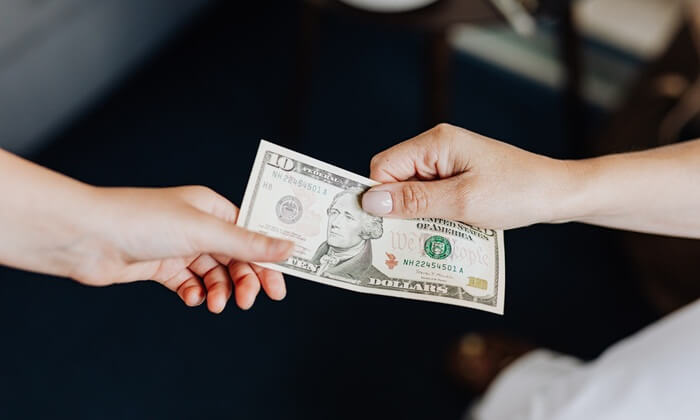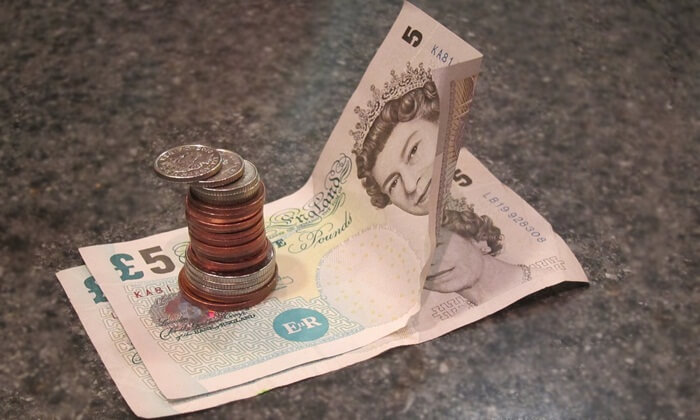Tipping is a gesture of gratitude — a small way to say “thank you” for good service. In many countries, including Vietnam, it’s not only about the money you leave, but also how you give it. Done thoughtfully, tipping can make both you and the recipient feel appreciated and respected.

1. What is a Tip in Vietnam?
A tip is a voluntary amount given to service providers as a token of satisfaction. In many Western countries, especially in restaurants, hotels, and tourism, tipping is almost automatic. In Vietnam, while tipping is not always expected, it’s warmly welcomed in certain settings — from receptionists and waiters to security guards, baggage handlers, tour guides, and drivers.
2. How to Give Tips in Vietnam at Different Places
Tipping customs in Vietnam vary depending on where you are and the type of service you receive. Here’s how to navigate it gracefully — ensuring your gesture feels warm and welcome wherever you go.

2.1. Self-Service Restaurants & Cafés
In places where you order and collect food at the counter, tipping is not the norm. However, if a staff member goes out of their way — perhaps bringing you hot water or helping you with something special — you can leave a small amount at the counter when paying. The most common way is simply to let them keep the change.
2.2. Small, Local Eateries
At casual family-run restaurants or street stalls, tipping isn’t common, and some owners may even feel awkward about it. If you’d like to show appreciation, do so with warmth — compliment the food, smile, and perhaps round up your payment at checkout. A sincere word of praise will likely be remembered far longer than the money itself, and you might even get extra attention next time.
2.3. Mid-Range Restaurants
In moderately priced, well-decorated restaurants, for example some restaurants in Hue City or other cities — tipping is a kind gesture, even if it’s not expected. Staff here often provide attentive service without adding a service charge to your bill. An extra 10,000–20,000 VND (or more, depending on your means) is a respectful way to acknowledge their professionalism.
2.4. Luxury Hotels & Fine Dining
In 4- or 5-star establishments, tipping is part of the experience. From waitstaff to porters, almost every service provider will appreciate it. Here, your tip is more than a reward — it’s a reflection of your understanding of hospitality etiquette. Follow the staff’s guidance, treat requests politely, and feel free to adjust your table setting or seating, but do so graciously.
Travel Tip: In Vietnam, the value of a tip isn’t just in the amount — it’s in the sincerity behind it. Pair it with a smile, a thank you in Vietnamese (“Cảm ơn”), and you’ll leave a lasting impression.
On average, in Vietnamese restaurants, a tip of about 10% — plus an extra 5% handed directly to the staff — is considered generous and polite. The exact amount often depends on the little things that make your dining experience special:
- Warm, attentive service — where every personal request is met with a smile and quiet professionalism.
- Perfect timing — dishes arriving just when you’re ready, with thoughtful arrangements for a smooth, enjoyable evening.
- Graceful gestures — like bringing an extra spoon the moment you need it, pouring wine with a steady hand, or quickly covering a small spill with a plate while offering a sincere apology.
- Discreet attentiveness — knowing when to step away if guests are deep in conversation, returning only when needed, and moving at a calm, unhurried pace. A truly skilled server can make you feel they’re always nearby without ever intruding — ready to assist the moment you signal.
2.5. Tipping for Drivers and Local Guides
When traveling in Vietnam, tipping drivers and tour guides is a common way to show appreciation — even if it’s not officially included in your itinerary.
- Day tours — For short trips like a city tour in Hanoi or Saigon, a Hue street food adventure, or a hands-on cooking class, you can offer a tip at the end of the day if you’ve enjoyed the experience.
- Private multi-day tours — Many travelers prefer tipping at the start of each day to encourage extra care and attention. For guides, 10 USD per day is considered thoughtful; for drivers, around 5 USD is appropriate.
- Group multi-day tours — Tips are usually given on the final day. Placing the USD, EURO, or Vietnamese money in an envelope (often available in your hotel room or at reception) adds a touch of formality and respect.
3. General Good Rules for Tipping Politely in Vietnam

Tipping in Vietnam is not just about the amount you give — it’s about the way you give it. A thoughtful gesture, paired with kindness and respect, often leaves as much of an impression as the tip itself.
- Use the bill cover discreetly — If the restaurant provides a leather bill cover, slip your tip inside before returning it. When there’s no cover, place the tip subtly on the table rather than handing it over directly.
- When leaving the change — If you’d like the staff to keep the change, simply smile and say softly, “You keep it, thank you!” When paying by card, write the tip amount on the bill, sign it, and return it to the staff.
Learn to say “Cảm ơn!” (Thank you!) in Vietnamese — it adds warmth to your gesture.
- Round up gracefully — Instead of giving small, mismatched notes, round the total up to the nearest clean amount with a single banknote. This looks tidier and feels more respectful.
- If you must leave before the staff returns — A friendly nod, a smile, or a small hand gesture toward the bill cover on the table signals your appreciation without words.
- Avoid over-the-top gestures — Don’t make a show of giving tips, especially in front of others. Subtlety is a sign of refinement.
- Minimum amounts — Tips under 5,000 VND are uncommon. If tipping in US dollars, $1 is a reasonable starting point.
- When not tipping — If you choose not to tip in a luxury setting, make sure you have a valid reason. Address poor service privately and politely, without raising your voice or showing visible frustration. If the food is wrong or not as expected, allow the staff to correct it without embarrassment.
Remember: you can walk out of even the finest restaurant without tipping if you have a suitable reason — and still hold your head high. But if it’s simply a matter of habit or budget, choose a venue that matches your comfort level for next time.
4. Conclusion
Keep these tipping customs in mind as you travel through Vietnam’s stunning landscapes. They’re more than just etiquette — they’re your key to becoming a thoughtful, culturally aware traveler from your very first visit.
Remember, these are general guidelines. Each restaurant, hotel, or tour company may have its own practices, so it’s always wise to check or ask. A quick word with your local guide or a trusted local friend can help you navigate with ease.
Travel kindly, tip wisely, and enjoy the warm connections you’ll make along the way.




